You spotted a blue bird with an orange chest or an orange belly, but what species is it? There are only six blue-colored birds with orange underneath throughout the US and Canada so accurately identifying them shouldn’t be difficult. Especially with this handy and complete list of blue birds and orange chests or bellies!
With more than 25 years of experience attracting backyard birds to my yard (Wisconsin), I’ve studied all of the blue-colored orange-chested birds in my area so I have the information you’re looking for. For the remaining bird species, I rely on my trusty sourcebooks and friends at The Cornell Lab of Ornithology to guide me.
The six blue birds with orange on their chest or belly are:
- Barn swallow
- Belted kingfisher
- Eastern bluebird
- Lazuli bunting
- Red-breasted nuthatch
- Western bluebird
This article includes the species of wild birds blue in color with some degree of orange or shade of orange on its chest or belly area. It may be a splash of orange or the entire underparts orange. The bird may even be bright orange, dull orange, rusty/orange … regardless, the bird is blue with some shade or orange underneath.
The range maps are color-coded so you know if it’s a year-round bird, there to breed, migrating through, or there during a non-breeding time.

I also included a beautiful photo to help you identify these blue & orange beauties along with detail such as:
- Size + appearance description
- Diet in the wild and at the feeder
- Habitat
- Nest & eggs description
- Range map
So let’s get at it, here are the blue-colored birds with orange chests or bellies in the US and Canada.
Barn Swallow
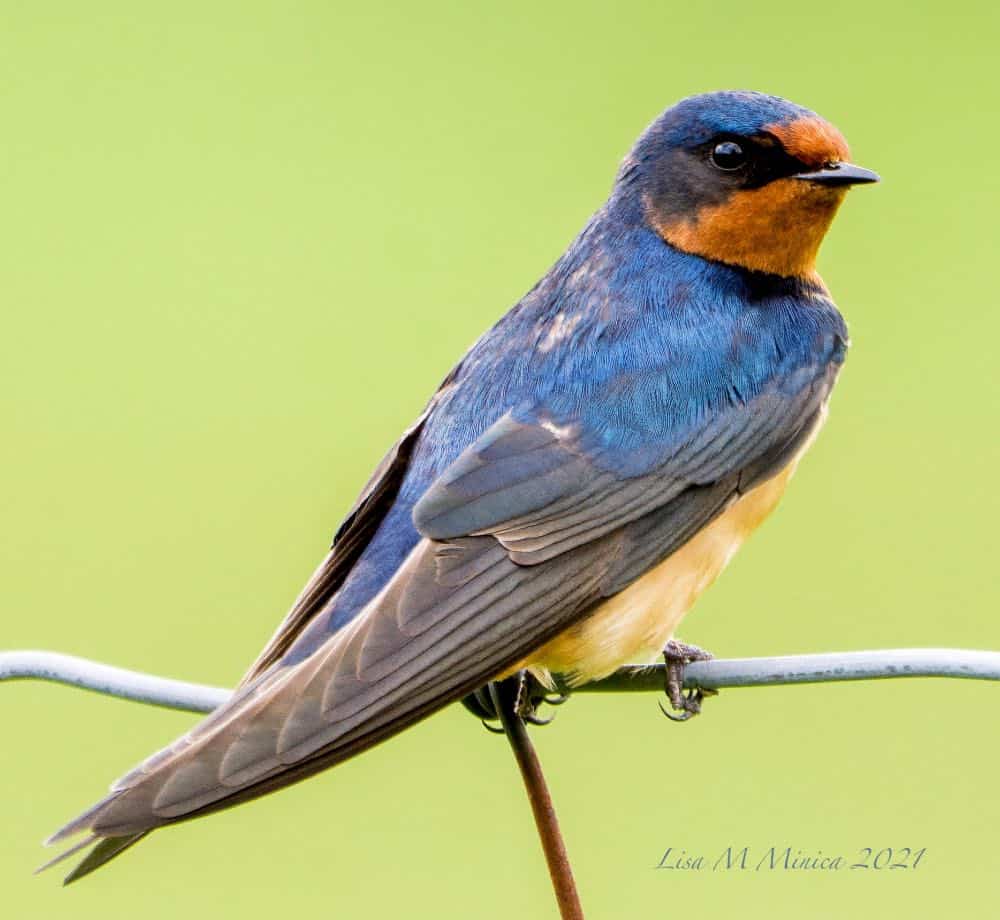
Appearance: 7″ long, steel blue glossy on top, chestnut forehead and throat, and rust-orange underparts. Long forked tail with a white base. The female’s coloring is lighter and the tail shorter.
Diet: Insects, preferably beetles, wasps, and flies. Drinks by skimming the surface of the water.
Feeder food: Not likely to visit a feeder.
Habitat: Open fields and pastures.
Nesting: A barn swallow typically nests in or on a manmade structure such as a barn. Builds nests of mud. 2 broods/season, 4-5 eggs per brood, eggs are white with brown markings, incubation from 13-17 days.
Migration: Barn swallows are migrators. In spring, they’ll migrate north into the US and Canada for breeding and to raise their young. When fall comes, they’ll head south to Mexico’s southern states. That said, they do maintain a year-round range in central Mexico where they remain for every season.
Range Map
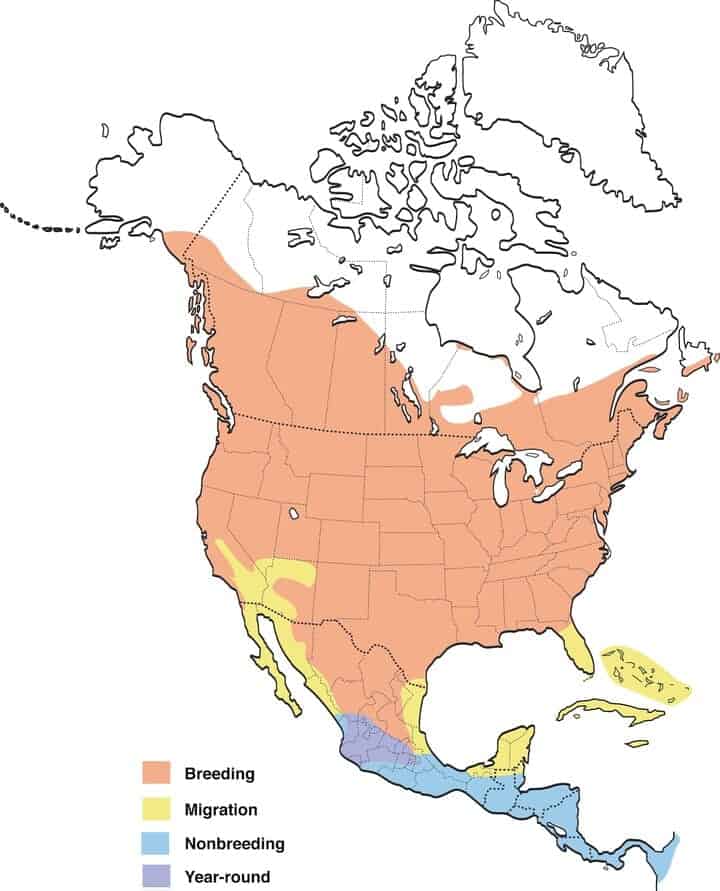
Belted Kingfisher
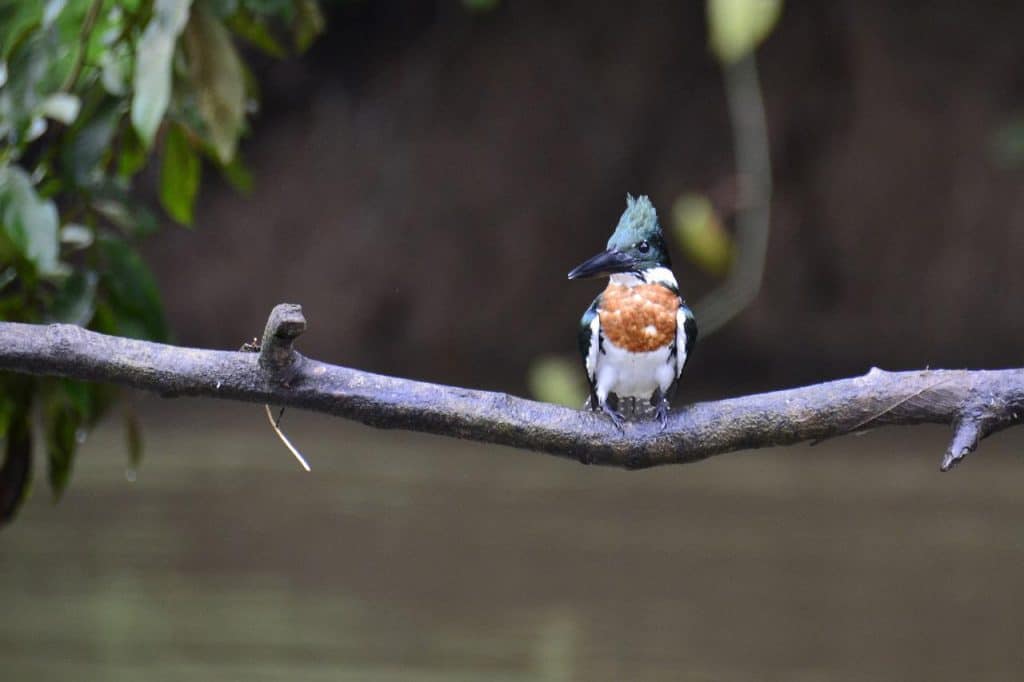
Appearance: The belted kingfisher is a large 13″ long bird with a large head, long bill, and stocky body. Blue/gray throughout with white ring around neck and white chest. The Female is the same but with an additional chestnut band on her chest.
Diet: Large 13″ long bird with a large head, long bill, and stocky body. Blue/gray throughout with white ring around neck and white chest. The Female is the same but with the additional chestnut band on the chest.
Feeder food: Unlikely to come to the feeder but often attracted to yards with streams or ponds.
Habitat: Near streams, rivers, ponds, lakes, and calm marine waters – especially unclouded water with little vegetation.
Nesting: Belted kingfishers dig burrows along the water’s edge for their nest. 1-2 broods/season, 5-8 eggs/brood – large white glossy eggs (1.5″ long), 22-24 days incubation.
Migration: Many but not all belted kingfishers are migrators. In spring, the migrators will head north into Montana, North Dakota, northern Minnesota, Canada, and Alaska to breed and raise their young. When fall comes the migrators head back south – as far south as Arizona, New Mexico, southern California, and Mexico.
Year-round range: All US states (except North Dakota and Arizona) and the pacific coast of Canada’s British Columbia.
Breeding range: While some stay in their year-round range, many others migrate north into Montana, North Dakota, northern Minnesota, Canada, and Alaska to breed and raise their young. When fall comes the migrators head back south – as far south as Arizona, New Mexico, and southern California.
Winter range: While many belted kingfishers migrate south for winter, just as many remain in their year-round range when the temperatures dip.
Range Map
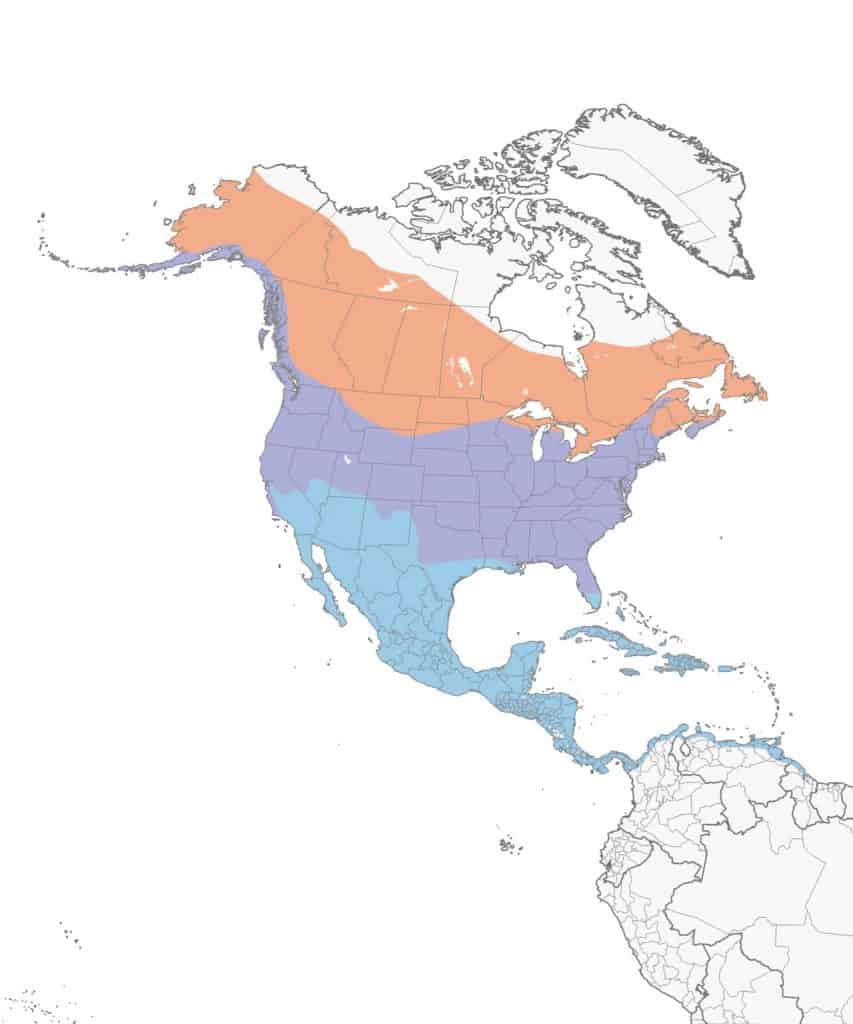
Eastern Bluebird
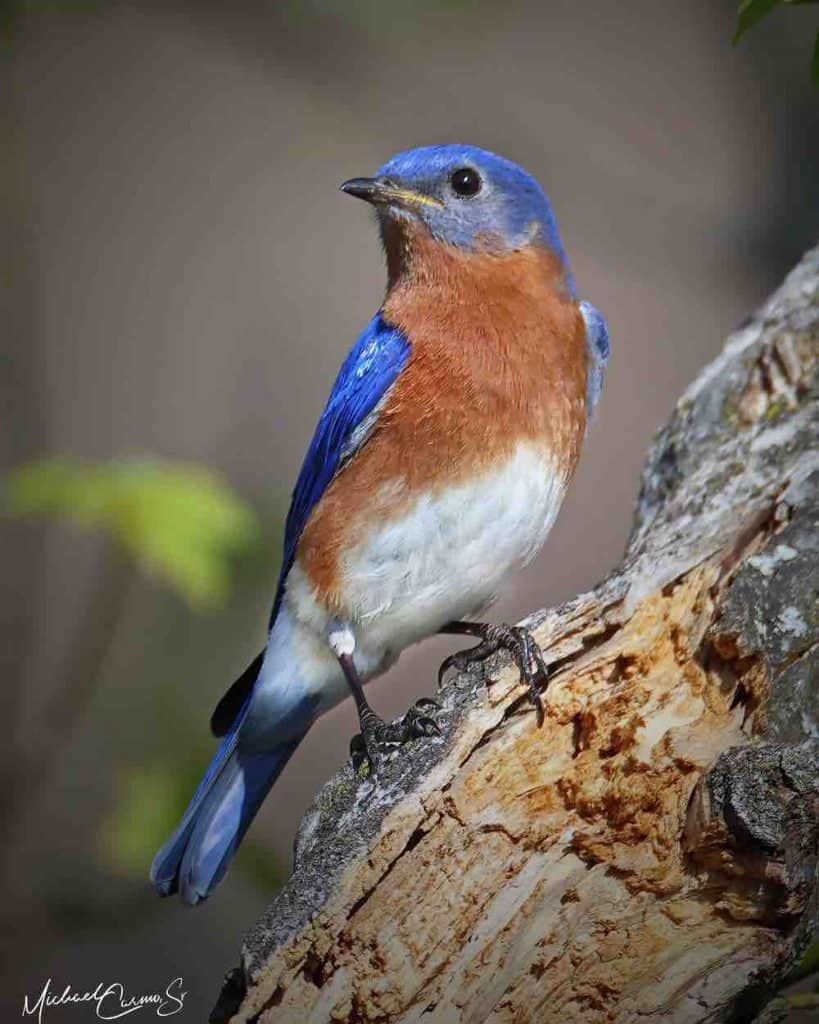
Appearance: Eastern bluebirds are small birds about 7″ long, royal blue, orange throat & breast, white belly & undertail. Female is similar but with more muted colors
Diet: Insects & spiders in spring/summer. Small fruit in Fall/Winter.
Feeder food: Suet, sunflower seeds, dried fruit, jelly.
Habitat: Wide-open spaces, fields, meadows.
Nesting:
- Nest: Cavity nesters. The male bluebird determines the nest site (an old woodpecker hole in a tree or manmade nestbox), but the female is the one who builds the nest. She keeps the nest for multiple broods.
- Brood: 2-7 broods/season
- Clutch: 4-5 eggs/brood
- Egg color: Pale blue eggs (sometimes white) with no blemishes or discoloration.
- Egg size: 0.9 inches by 0.8 inches
- Incubation: 11-19 days
Migration: Some eastern bluebirds are migrators. While many remain in their year-round range all year long, some migrate north for breeding and raising their young then head south in winter back into the year-round range or further west into Colorado, New Mexico, and western Texas.
Year-round range: The US states south and east of Nebraska, Mexico, and Central America.
Breeding range: Northwest Nebraska, South Dakota, North Dakota, Minnesota, the northern half of Wisconsin & Michigan, New Hampshire, Maine, and the southern part of these Canadian provinces: Saskatchewan, Manitoba, Ontario, and Quebec.
Winter range: Eastern Colorado, New Mexico, western Texas, and northeast Mexico.
Range Map
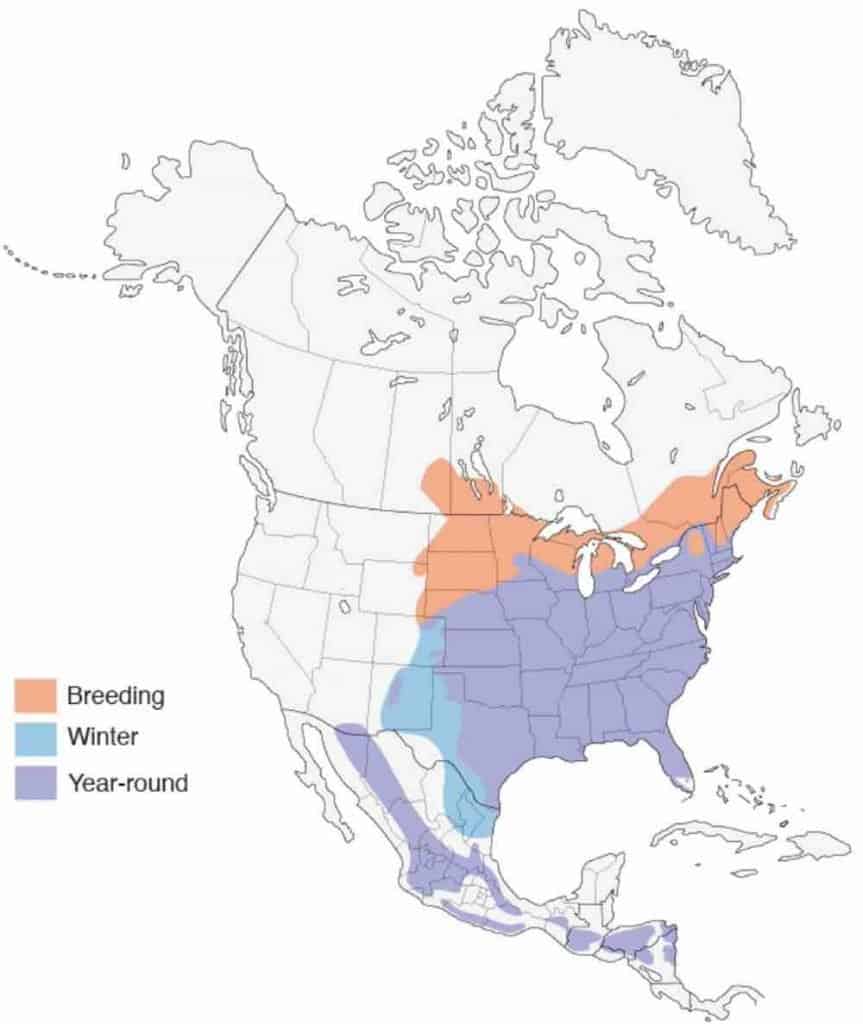
Lazuli Bunting
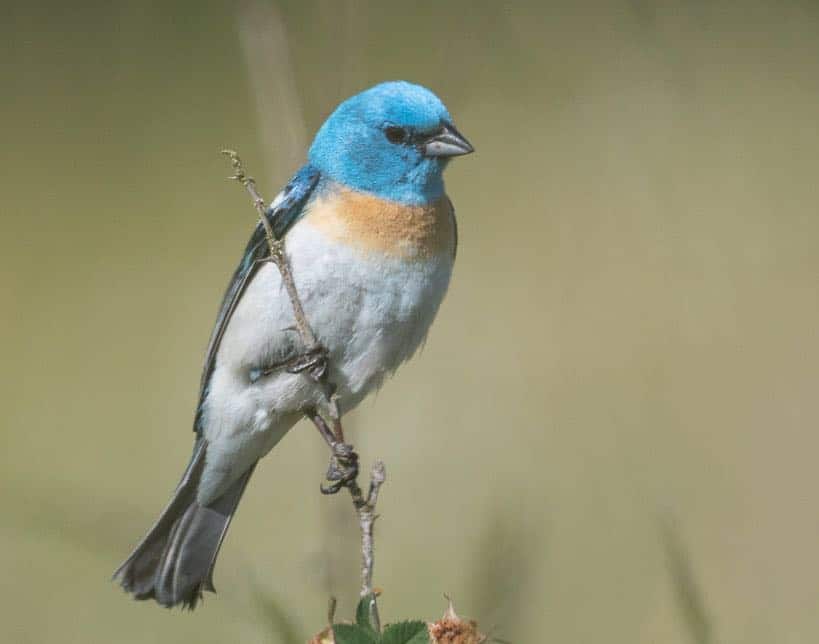
Appearance: Small bird 5-6″ long, brilliant blue on top, soft orange-cinnamon color chest, white belly and patch on the shoulder, cone-shaped bill, and slightly flat forehead.
Diet: Insects, fruits, and grasses.
Feeder Food: White proso millet, sunflower seeds, or nyjer thistle seeds.
Habitat: Open woodlands, brushy hillsides, thickets, and backyards throughout the West.
Nesting: Cup-shaped nest of bark, twigs, and leaves nestled in a shrub about 3′ up. They have 1-2 broods/season, 3-4 eggs/brood, and eggs are .7-.8″ long and pale blue to faint green/blue or white. 11-14 days incubation period.
Range Map
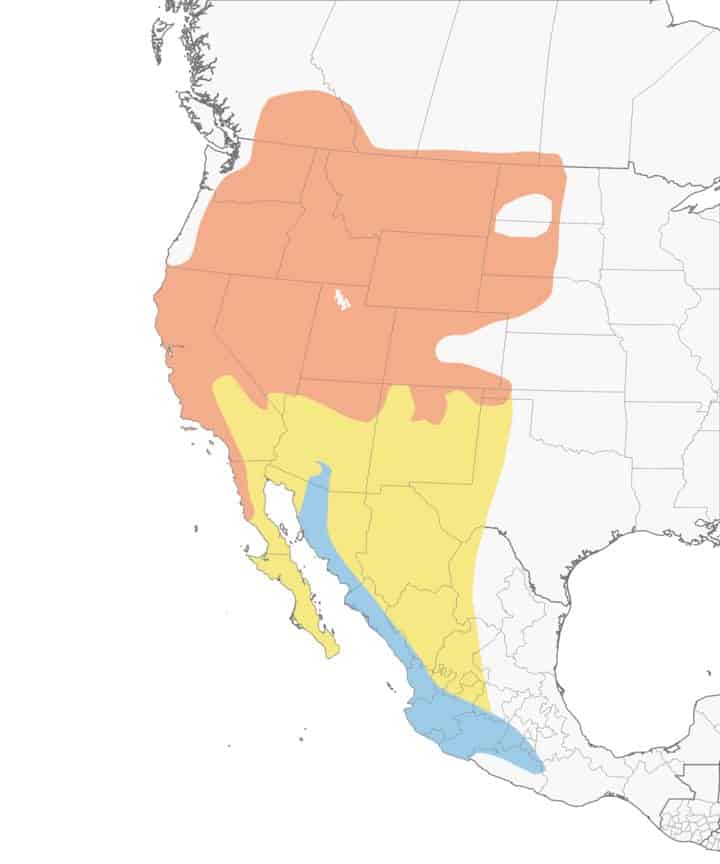
Red-Breasted Nuthatch
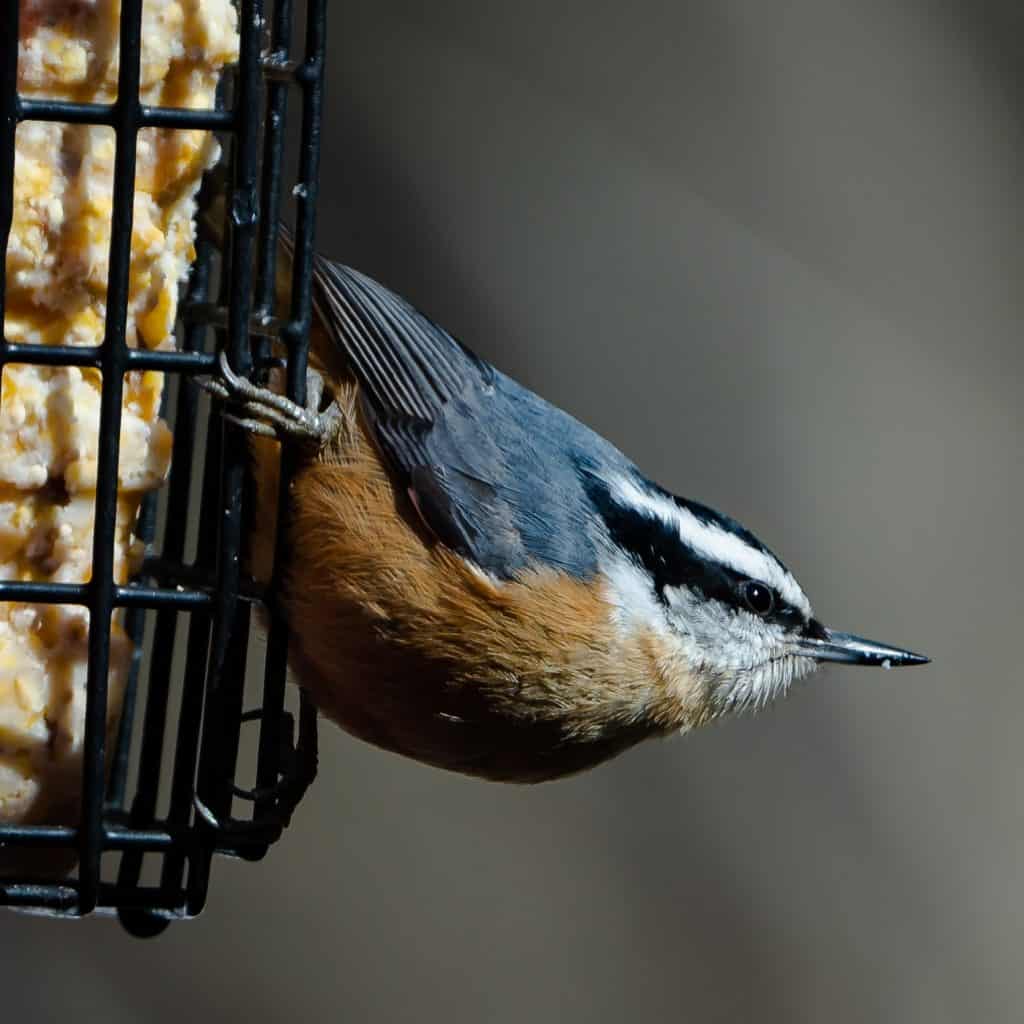
Appearance: The red-breasted nuthatch is a small bird about 4.5″ long, with gray/blue backs, a white head with black stripes running over either eye, orange-cinnamon-colored breast, and a pointy pick-like beak. The females look the same except their underside is a more faded color. Usually spotted climbing upside-down on a deciduous tree foraging for insects beneath the bark.
Diet: Insects, spiders, and other bugs.
Feeder food: Suet, sunflower seeds, shelled peanuts, fruit.
Habitat: Forested areas primarily comprised of coniferous trees (i.e. pines). Woodsy areas of deciduous trees in the east. Southern birds prefer mountainous regions until winter comes in which case they head to lower land.
Nesting: Red-breasted nuthatches are cavity nesters and they prefer to excavate their own holes. They have 1 brood/season, and 6 eggs/brood, eggs are white & speckled with red-brown.
Migration: Red-breasted nuthatches are partial migrators. While many remain in their year-round range, others migrate south for winter.
Year-round range: Southern Alaska, states in the western third of the US, northern Minnesota & Wisconsin, Michigan, Pennsylvania, and New England as well as all Canadian provinces except Nunavut.
Winter range: US states that are not part of the year-round range.
Range Map
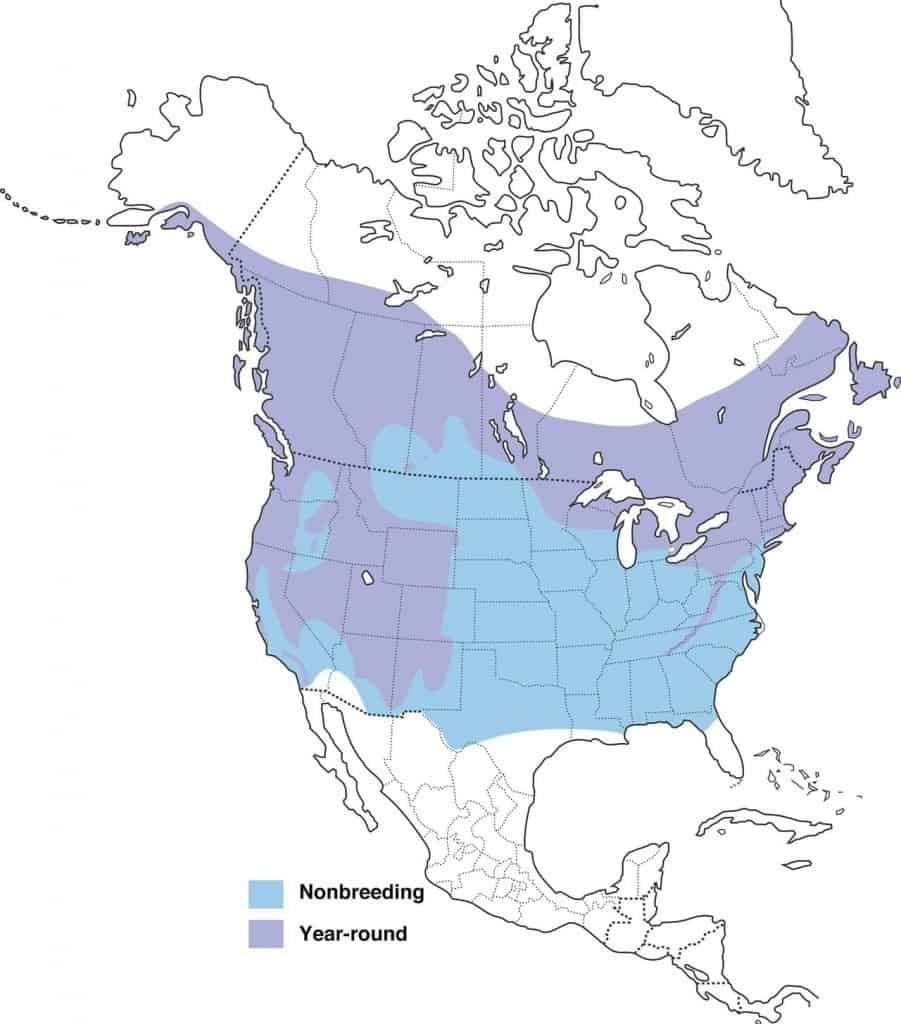
Western Bluebird
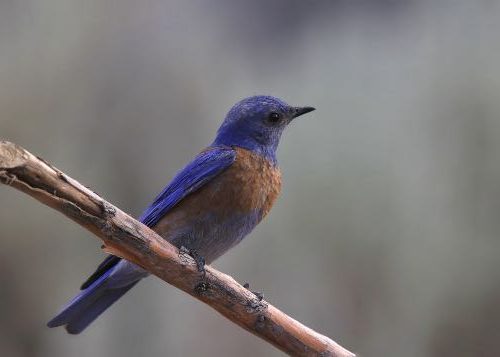
Appearance: Small bird 7″ long, deep blue underparts, orange-chestnut back and breast. Female gray/blue, light blue wings and tail, and pale chestnut breast.
Diet: Insects, fruits & berries.
Feeder Food: Mealworms
Habitat: Open woodlands especially those with pines and oaks, orchards, and farmland with some trees.
Nesting:
Nest: Cavity nesters – old woodpecker hold or manmade nesting box.
Brood: 2 broods/season
Clutch: 4-5 eggs/brood
Egg color: Pale blue without blemishes, although sometimes are white
Egg size: Length: 0.8-2.4″ x Width: .8″
Incubation: 12-18 days and young fledge at about 20 days.
Range Map
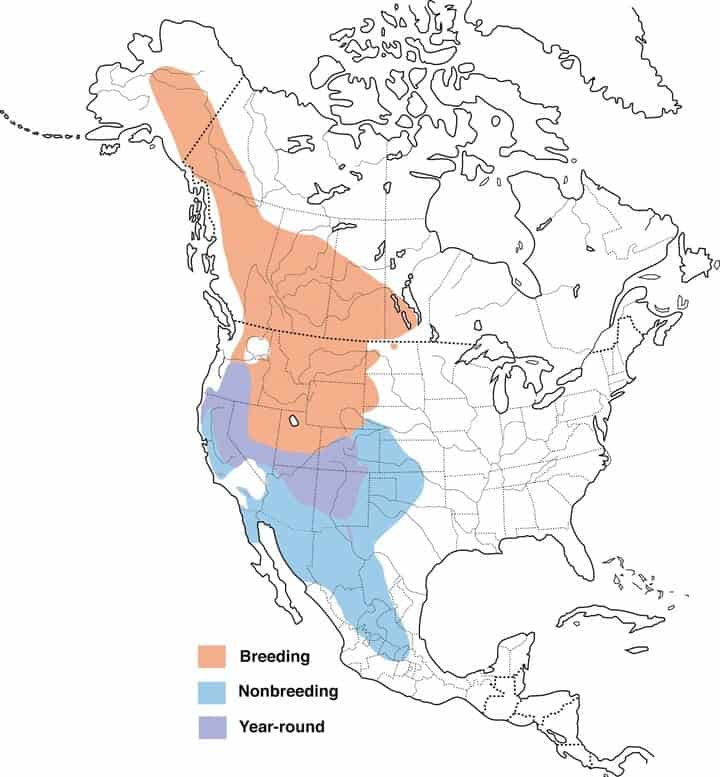
Conclusion
Hopefully, you’ve identified the blue bird with an orange on its chest or belly. If you want to see more the complete list of blue birds in the US and Canada, check out my article Blue Birds in the US & Canada.

